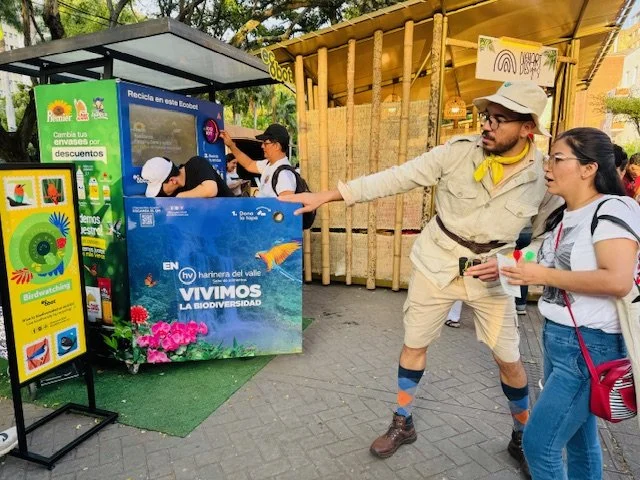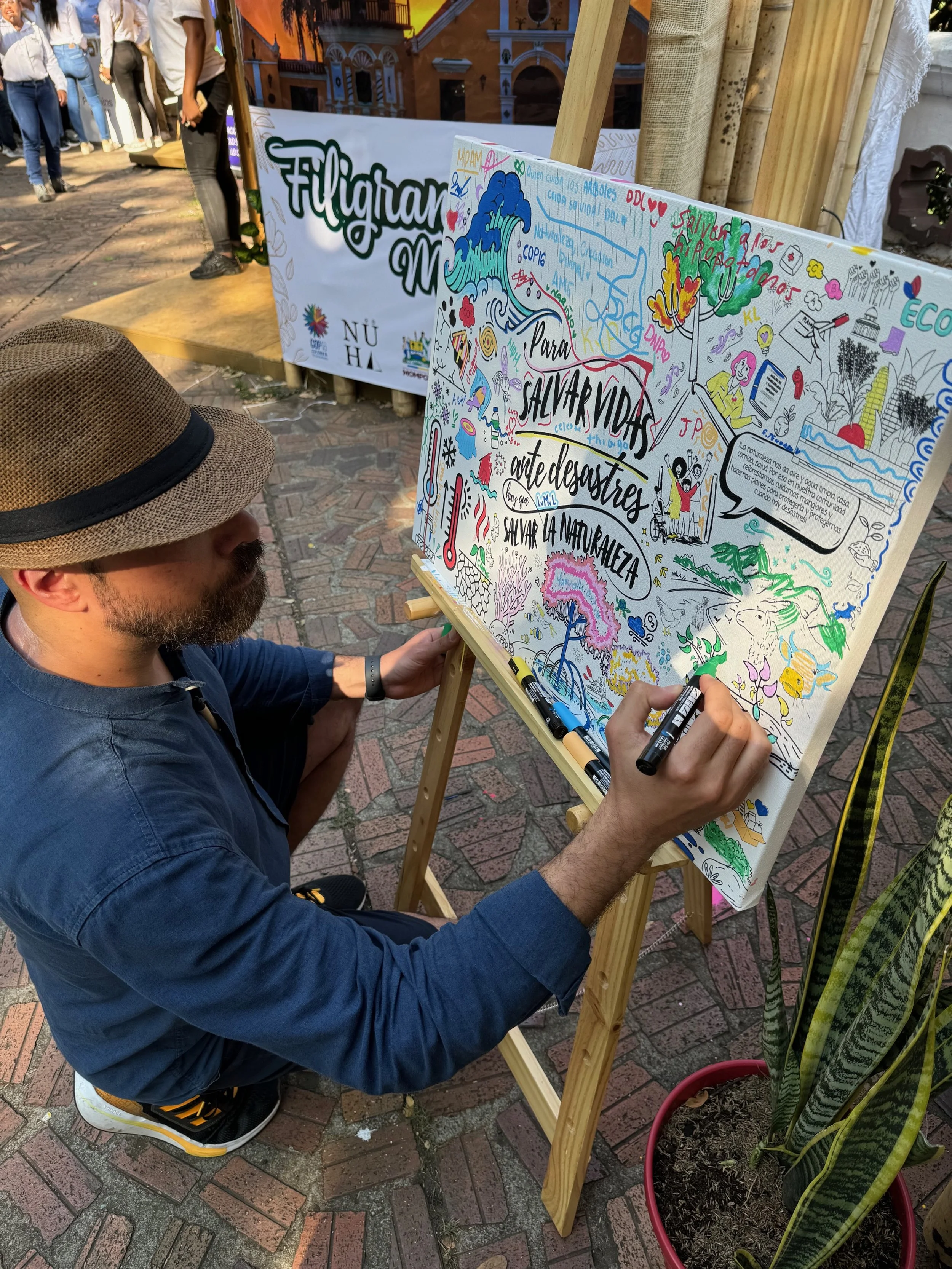The Local Impacts of COPs on Host Cities: The Biodiversity COP in Cali, Colombia
COPs as catalysts for Local Change
Organizing COPs (Conferences of the Parties) has become increasingly controversial in recent years, raising questions about their overall impact, inclusivity, and even their own emissions. Yet many climate advocates still underscore the undeniable value of COPs as catalysts for global change, as exemplified by landmark achievements like the Paris Agreement.
One of the less-discussed aspects of COPs is their impact on the host country—particularly the host city.
As I write this article from a cozy café in Cali, immersed in the city’s vibrant energy and rich culture, I reflect on the mixed outcomes of COPs and the often-overlooked role they play in community and equitable urban development.
In this article, I explore the community and environmental justice effects of COPs, focusing on COP16 Biodiversity, which is currently underway in Cali, Colombia.
Benefits and Drawbacks of COPs
Benefits:
Catalyst for global Policy: COPs serve as essential platforms for international climate agreements, such as the Paris Agreement, setting global standards and shared goals.
Networking and Partnership: Bringing together policymakers, scientists, NGOs, and business leaders opens doors for collaborations that can drive climate action forward.
Economic boost and branding opportunity for host Cities: Hosting COPs brings international visitors, benefiting local economies through increased spending on hotels, dining, and local attractions.
Environmental justice considerations: hosting COPs in developing countries can support environmental justice communities, most impacted by the climate change.
Engagement and Capacity building: COPs often feature public zones where locals and conference attendees can engage in climate discussions, workshops, and cultural events, enhancing climate literacy.
Drawbacks:
Less talk, more action: Three COPs are happening back to back, from mid October to mid December. One in Cali, Colombia, one in Baku, Azerbaijan, and one in Riyadh, Saudi Arabia. Do we need all these COPs, in addition to several other national or regional climate events across the world? When will staff, policy makers, and politicians find time to strategize and implement?
More inclusion of local communities: The main negotiations occur in exclusive settings, which can feel disconnected from the people most impacted by climate change.
Corporate influence: COPs sometimes see a strong presence from large corporations (e.g. Oil and gas companies in COP 28 in Dubai), leading to concerns about greenwashing or undue influence over climate agendas.
High costs and emissions: The carbon footprint of COPs and the associated expenses have led some to question whether these resources could be better allocated.
Limited immediate impact: While COPs set goals, there’s often criticism regarding the follow-through, particularly in terms of enforceable commitments from participating countries.
COPs (Conferences of the Parties) are critical global gatherings under the UN Framework Convention on Climate Change (UNFCCC) where representatives from nearly every country come together to negotiate and establish climate goals, update national commitments, and review progress on previously set targets. These meetings are designed to build consensus on global climate action, with each COP focusing on advancing policies and actions that align with the Paris Agreement and other key frameworks.
The Green Zone as a Community Engagement Venue: The Case of COP16 Biodiversity in Cali
While much of the formal climate negotiation is happening in the Blue Zone, far from the city center, a different kind of climate action is unfolding in the Green Zone, right at the heart of the city.
The green zone, which is open to the public, has attracted a diverse set of stakeholders. These include small local businesses (e.g. local tea farms), local residents, global technology firms (e.g. Meta), as well as international NGOs and politicians.
A large poster in the Green Zone showing the “why”. Why biodiversity is important, and why residents should care about the climate impacts.
The Green Zone acts as a large public engagement venue. In this zone, the essence of the COP extends beyond policy negotiations to engage people on a more personal level. Locals are participating in workshops, discussions, and cultural events focused on climate awareness.
This Green Zone provides an interactive setting, enabling meaningful global-local interactions.
The Green Zone, provides a welcoming environment for the public, local businesses, global companies, politicians, and others to interact.
Colombia and Cali used COP16 as an opportunity for rebranding
Beyond the climate negotiations, the COP in Cali has highlighted the regions’ and Cali’s vibrant social, cultural, and economic status.
Local businesses introduce their products to a global audience.
For Cali, this international presence specifically provides visibility on a global stage, potentially opening doors for future tourism and investments.
As the Mayor of Cali mentioned during the event, Cali wants to change the worlds’ perception about the crime rate in Cali, and show how safe, welcoming, and vibrant this city is.
The Event provided a great rebranding opportunity for Cali and Colombia.
In the Green Zone, COP attendees and Cali locals connect in workshops, discussions, and social gatherings, which strengthens bonds within the region, city, and its culture.
Green zone provides interactive games to keep the visitors engaged.
COP in Cali is doing more than talking about climate change. It is empowering people through education on climate action, while educating the world about untapped investment opportunities.
Various booths use Virtual Reality (VR) to promote more sustainable practices— in this case recycling.
Are COPs over-rated?
While COPs may face criticism for their exclusivity and the heavy presence of corporate interests, their benefits are undeniable when we look beyond policy papers and international declarations. In Cali, COP has enabled community connection, cultural exchange, and economic activity.
For a city that may not always be in the spotlight, COP provides a unique platform to showcase local resilience, environmental stewardship, and the willingness of its people to engage with global challenges.
Local small businesses showcasing sustainable practices, representing their culture.
So, are COPs overrated?
The world may not need to host three back-to-back in-person COPs, especially with similar participants meeting repeatedly. However, for the people of Cali and other similar host communities, the benefits extend beyond the negotiation rooms.
These events foster local awareness, build capacity, and reinforce that the fight against climate change is a collective effort, not just in the hands of a few decision-makers but within the broader community.
For developing countries like Colombia, hosting COPs also offers a platform to address equity and environmental justice concerns in global climate policy directly. It brings visibility to the challenges and priorities of regions most affected by climate change.
Final thoughts
Hosting COPs is a unique opportunity for presidents and mayors to showcase their leadership and ambition, extending beyond climate agendas.
This is especially impactful in developing countries, where the chance to host can spotlight national strengths, boost infrastructure, and draw international support. Colombia and Cali has successfully leveraged this opportunity to display their capabilities.
Bringing COPs to developing nations also addresses some of the concerns surrounding the events' high costs and carbon footprint by supporting the regions most vulnerable to climate impacts.







